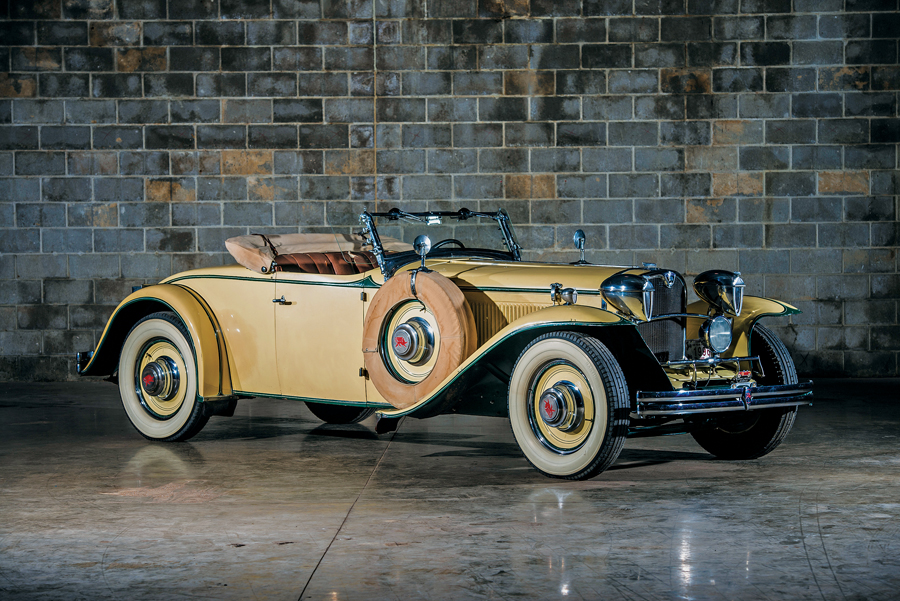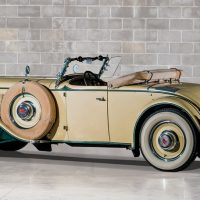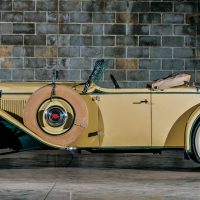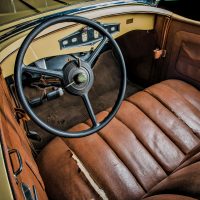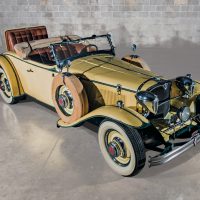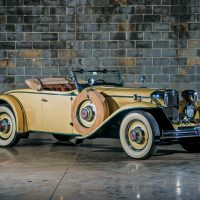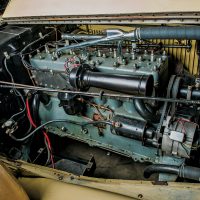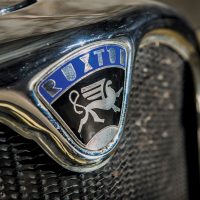SCM Analysis
Detailing
| Vehicle: | 1930 Ruxton Model C Roadster |
| Years Produced: | 1930 |
| Number Produced: | 96 |
| Original List Price: | $4,500 and up |
| SCM Valuation: | $486,000 |
| Tune Up Cost: | $1,500 |
| Chassis Number Location: | Front driver’s side frame rail |
| Engine Number Location: | Plate attached to passenger’s side of motor block |
| Club Info: | Classic Car Club of America |
| Alternatives: | 1929 Cord L-29, 1930 Packard 734 Speedster, 1929 duPont Model G Speedster |
| Investment Grade: | A |
 This car, Lot 382, sold for $747,500, including buyer’s premium, at RM Sotheby’s Guyton Collection sale at the Staenberg Family Complex in St. Louis, MO, on May 4–5, 2019.
This car, Lot 382, sold for $747,500, including buyer’s premium, at RM Sotheby’s Guyton Collection sale at the Staenberg Family Complex in St. Louis, MO, on May 4–5, 2019.
The Ruxton was truly an innovative and remarkable automobile, but what was even more remarkable was that they were able to produce 96 of them — considering the turmoil that surrounded their brief existence.
William Muller, who worked for the Budd Company, persuaded company president Edward Budd to produce a revolutionary front-drive automobile. It was based on his transmission design, which split it in halves over the front axels.
First and reverse gears were housed in front of the drive axle and second and third gears were behind it. This resulted in more weight on the front wheels for better traction, greater cabin room, and it allowed the body to be channeled over the frame rails.
This resulted in a body that was so low to the ground that running boards were eliminated. The all-steel bodies were to be built by Budd Co., while the open and custom bodies — along with the chassis — would be sourced from other suppliers.
Drama galore
Corporate raider Archie Andrews, who was on several other automobile manufacturers’ boards, was Budd’s largest stockholder. In a scenario so bizarre it could not have been made up, when Budd was out of town on a business trip, Andrews met with second-in-command Hugh Adams and convinced him that Budd had sold him the front-drive project.
Andrews quickly absconded with the prototype, tooling — and even designer Muller, who had no idea it was all a scam.
Andrews failed to secure an arrangement with Hupp Motor Car Company to assemble the car, so he formed New Era Motors as the holding company.
Andrews looked for investors, and he was certain that Board member William V.C. Ruxton would invest $50,000. Ruxton instead traded shares in his cylinder-lock company for New Era shares. As Ruxton was an early, significant investor in the new automobile, it would bear his name.
It quickly became apparent that the stock Ruxton had presented was close to worthless.
Ruxton and Andrews had a parting of the ways and Ruxton stated that he did not want his name associated with the automobile, but the die was already cast. To add insult to injury, Ruxton sued Andrews for $50,000. He then walked away from the car that bore his name.
A very rare car
Our subject Ruxton Model C Roadster is one of 19 Ruxtons remaining. It also is one of the seven Ruxton roadsters with Baker-Rauling bodies that still exist. It was the sixth car assembled by the Kissel Motor Car Company — the third company to assemble the Ruxton.
It was owned for many years by Kissel President George Kissel. Even though Andrews forced Kissel’s firm into bankruptcy, George Kissel continued to lavish praise on the car.
It passed through several noted collectors, including those of D. Cameron Peck and “Tiny” Gould, before going to the Fred Guyton Collection in 1996.
Lots of work — and bills — ahead
The catalog stated that the car was restored as needed over the years.
In reality, our subject car is a “needs everything” project. Based on comments from those who observed the car, the paint, which appeared to be a respray, was chipped and dull with scratches. The interior was tired and torn, with the original leather replaced with worn-through vinyl.
The engine was old and stained, but the car was stated to run and drive well. It was complete with Woodlite headlights and fender lights — and a single Pilot Ray driving light. The engine was painted an incorrect color.
Lots of money, but find another one
The car has a unique four-bar luggage rack that may be original.
Even as a “needs everything” example, this car brought huge money.
In fact, RM Sotheby’s sold a 1932 Ruxton Model C sedan at their 2016 Amelia Island sale for $357,500.
In 2008, RM Auctions sold a 1931 Ruxton Model C Roadster for $363,000 at their Meadow Brook sale.
What’s the deal?
This was the most expensive Ruxton sold at auction. Simply stated, at least two determined bidders just had to have it. The result is an outlier, however.
No Ruxton Roadster has publicly sold since 2008, and this is the only one that will be offered in the foreseeable future.
If a Ruxton Roadster was a must-have, then the price paid was not out of line. A full restoration is planned, and the result will be stunning. We look forward to seeing it “on the green.” ♦
(Introductory description courtesy of RM Sotheby’s.)
